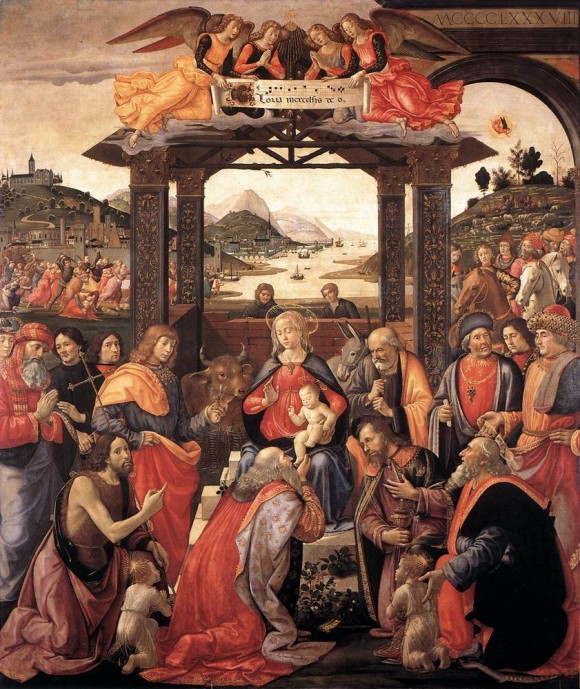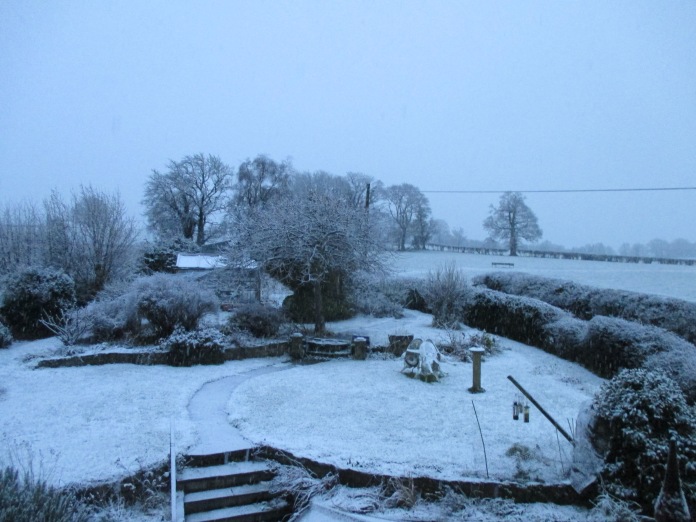
Christmas, a festival which celebrates the Birth of Jesus, crucially involves a ‘Virgin’, but also some Shepherds, Wise Men, and Angels. It is the subject of many paintings in Western Art, of sublime music and poetry – as well as the basis for countless Nativity plays performed, more or less endearingly, by small schoolchildren down the ages.
So the Nativity must surely be a very important story. But is it a ‘true story’ ? or, is it ‘a story of truth’ as understood by its Jewish writers near the end of the 1st Century AD’ ?
In fact only two books in the whole of the Christian Bible, Luke and Matthew which were written circa 85-90 AD, give an account of the birth of the itinerant Jewish preacher, Jesus of Nazareth, who after his death became the focus for the Jewish Sect sometimes called the Nazarenes.
The earliest books of the New Testament, the letters of Paul, have no stories of the Nativity, nor do any of the later books.
[Paul’s 1st Letter to the Thessalonians is the earliest of the New Testament books written circa 50 AD, that is about 56 years after the birth of Jesus, and, no, ’56 years’ is not a mistype – Dionysius Exiguus the 6th Century Monk charged by the Pope with creating the Anno Domini dating system was 5 or 6 years out in his calculation, so it is now probably 2023 AD]
The earliest of the Gospels, Mark, which was probably written in Rome around 65 AD has no account of the birth of Jesus and similarly there is none in the last of the Gospels, John, written around 100 AD or later (excepting the abstract imagery of “The Word Made Flesh”).
The conclusion must be that the Nativity story was either unknown, and/or considered to be of no importance to the writers of all the earlier and later works in The New Testament. So why were accounts of the events surrounding the Birth of Jesus included in the Gospels of Matthew and Luke written in the period 85-90 AD, and what is the connection with male genital mutilation? The answer lies in the date when these Gospels were composed by their unknown authors. Like breakaway sects of all faiths throughout history the Jewish-Nazarene sect, which included some pagan converts to this form of Judaism, found themselves in increasing conflict with the Orthodox Establishment. Finally towards the end of the 1st Century AD when the Gospels were written the conflict had reached crisis point.
The conflict included issues related to the observance of Orthodox Jewish customs, dietary and other laws, including a dispute over the necessity for ritual circumcision, that is, male genital mutilation, especially in the case of converts to Judaism. It is against this background that the writers of the two Gospels seek to establish the truth of their claim that Jesus of Nazareth was the long awaited Jewish Messiah, was Divine, was the Son of God. If they could so do it might mitigate against their other challenges to strict observance of the customs and laws of Orthodox Judaism.
[Writing in the 18th Century Edward Gibbon refers to male circumcision as “a singular mutilation practised by Jews and Turks”. Although there were later spurious claims for the medical benefits of the procedure starting in the 19th and persisting into the 20th Century, before that time it was otherwise unknown among Christians in Western Europe. Similar spurious medical claims were made for female genital mutilation (FGM) in the 19th Century but these claims were also discredited and the practice was soon abandoned in Europe although it persisted in the USA into the 20th Century. It must also be noted that while male circumcision is a ‘mutilation’ it cannot begin to compare with the horrors of FGM which is still widespread in many countries around the world and within communities originating from those countries]
But to return to the 1st Century: What could establish the Divinity of Jesus and thereby justify and validate the challenges that the Jewish-Nazarene sect posed to Orthodox Judaism? In ancient mythology, and specifically in the context of the Greco-Roman world in which the authors of Matthew and Luke were writing, a Virgin Birth would certainly be high on the list of criteria. And so it makes perfect sense to include stories of a Virgin birth for Jesus, and at the same time to back-reference the stories to earlier Jewish Scriptures to add verisimilitude and securely embed the Jesus cult within Judaism.
Most famously Matthew’s Gospel quotes a verse from the Book of Isaiah (ch 7 vs 14) and renders it as, “…. a virgin shall be with child ……and they shall call his name Emmanuel, which being interpreted is, God with us”. In fact in the original Hebrew the words used in the Book of Isaiah simply mean “the young woman” but in a later Greek translation of Isaiah the word is rendered as parthenos, that is, virgin and it is this misleading translation that the writer uses (Matthew Chapter 1 vs 23). Moreover the Book of Isaiah was probably written around 730 BC and relates to the political and religious turmoil of that time and the need to encourage King Ahaz of Judah then threatened with invasion. “The young woman” is most sensibly thought of as one of the wives of the King, thus the promised child will guarantee the dynasty’s future, and he can be called “Emmanuel” that is, “God is with us” (and not with our enemies!).
Equally, the writer of Luke in his Nativity story has to create some historically inaccurate and impossible constructions about ‘taxes and decrees from Caesar Augustus’ to get Mary and Joseph to Bethlehem for the birth of Jesus. Notwithstanding the problems the writer thereby back-references and embeds his story in the Jewish scriptures of Micah 5 vs 2 with respect to ‘Bethlehem’ as a future birthplace of ‘one who is to rule Israel’.
[It should be remembered that the unknown writers of the Gospels of Luke and Matthew were not writing for posterity. They were writing religious-political manifestos aimed at the Jewish community of their time. The Jewish-Nazarene belief of the authors was that Jesus was the promised Messiah, was the son of God, was Divine, was immortal, and thus resurrected. It is against this background that the ‘Manifesto’ of Luke makes that bold back-reference to Micah, the text of which identifies ‘one who is to rule Israel’ as being ‘born in Bethlehem’. The writer of Luke wants to convince Jews that Jesus is the Messiah, that he is already, or very soon will be, ruling over “Israel” in his Divine, and therefore immortal, presence and that Orthodox Jews of the 1st Century must accept this truth. Whether viewed in a religious or political sense this assertion, this ‘manifesto promise’, like many others before and since, proves to be spectacularly wrong.]
Although they differ markedly in many respects the Nativity stories in the two Gospels have become amalgamated in the popular imagination: Thus the ‘wise men’ in Matthew are put together with the ‘shepherds’ of Luke in renaissance art. The scene is further developed with ‘non-biblical extras’ for dramatic effect – donkeys, camels, cattle in stables, and three ‘Kings’ of different ethnic origins (instead of an unspecified number of ‘wise men’).
But notwithstanding all this later conflation and accretion, both Gospel writers are simply using an ancient literary convention of storytelling, not to recount actual events and historical details, about which they knew absolutely nothing, but to tell the Jewish community of their time ‘what the truth must be’.
In the end the Nazarene cult with its pagan converts was unsuccessful in its struggle to remain within Judaism. It was eventually banned from synagogue services because of the challenges it posed to Orthodox Jewish beliefs and practices including, although it was just one element, the issue relating to ritual circumcision.
And so it was that in the land of its origin the Jewish-Nazarene Sect failed to gain a significant foothold. But it did go on to attract converts among pagans in the wider Roman World, eventually developing a faith system which, while having the same Abrahamic roots as Judaism, diverged to flourish as Christianity. As Edward Gibbon remarks in ‘Decline and Fall of the Roman Empire’: “Christianity offered itself to the world, armed with the strength of the Mosaic Law, but delivered from the weight of its fetters”. As a consequence it became a major world religion which no longer required ritual male genital mutilation, and also allowed its adherents to eat bacon sandwiches.
The Nativity stories of Matthew and Luke, written around 85-90 AD in an attempt to keep the Nazarenes within Judaism failed in their original purpose. Nevertheless they formed the basis for, and slowly developed into the Christmas celebration that we know today. Overlooking the deplorable excesses of that development in the 21st Century, the Nativity narratives have also been the source of great art, music and literature through the ages – something to celebrate and for which to be grateful.
———————————————————————————–



